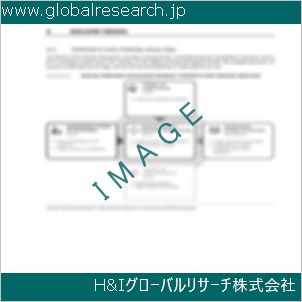Table of Contents
1 Industry Overview of Sodium metal
1.1 Definition and Specifications of Sodium metal
1.1.1 Definition of Sodium metal
1.1.2 Specifications of Sodium metal
1.2 Classification of Sodium metal
1.3 Applications of Sodium metal
1.3.1 Nuclear Application
1.3.2 Non-Nuclear Application
1.4 Industry Chain Structure of Sodium metal
1.5 Industry Overview and Major Regions Status of Sodium metal
1.5.1 Industry Overview of Sodium metal
1.5.2 Global Major Regions Status of Sodium metal
1.6 Industry Policy Analysis of Sodium metal
1.7 Industry News Analysis of Sodium metal
2 Manufacturing Cost Structure Analysis of Sodium metal
2.1 Raw Material Suppliers and Price Analysis of Sodium metal
2.2 Equipment Suppliers and Price Analysis of Sodium metal
2.3 Labor Cost Analysis of Sodium metal
2.4 Other Costs Analysis of Sodium metal
2.5 Manufacturing Cost Structure Analysis of Sodium metal
2.6 Manufacturing Process Analysis of Sodium metal
3 Technical Data and Manufacturing Plants Analysis of Sodium metal
3.1 Capacity and Commercial Production Date of Global Sodium metal Major Manufacturers in 2023
3.2 Manufacturing Plants Distribution of Global Sodium metal Major Manufacturers in 2023
3.3 R&D Status and Technology Source of Global Sodium metal Major Manufacturers in 2023
3.4 Raw Materials Sources Analysis of Global Sodium metal Major Manufacturers in 2023
4 Capacity, Production and Revenue Analysis of Sodium metal by Regions, Types and Manufacturers
4.1 Global Capacity, Production and Revenue of Sodium metal by Regions 2019-2024
4.2 Global and Major Regions Capacity, Production, Revenue and Growth Rate of Sodium metal 2019-2024
4.3 Global Capacity, Production and Revenue of Sodium metal by Types 2019-2024
4.4 Global Capacity, Production and Revenue of Sodium metal by Manufacturers 2019-2024
5 Price, Cost, Gross and Gross Margin Analysis of Sodium metal by Regions, Types and Manufacturers
5.1 Price, Cost, Gross and Gross Margin Analysis of Sodium metal by Regions 2019-2024
5.2 Price, Cost, Gross and Gross Margin Analysis of Sodium metal by Types 2019-2024
5.3 Price, Cost, Gross and Gross Margin Analysis of Sodium metal by Manufacturers 2019-2024
6 Consumption Volume, Consumption Value and Sale Price Analysis of Sodium metal by Regions, Types and Applications
6.1 Global Consumption Volume and Consumption Value of Sodium metal by Regions 2019-2024
6.2 Global and Major Regions Consumption Volume, Consumption Value and Growth Rate of Sodium metal 2019-2024
6.3 Global Consumption Volume and Consumption Value of Sodium metal by Types 2019-2024
6.4 Global Consumption Volume and Consumption Value of Sodium metal by Applications 2019-2024
6.5 Sale Price of Sodium metal by Regions 2019-2024
6.6 Sale Price of Sodium metal by Types 2019-2024
6.7 Sale Price of Sodium metal by Applications 2019-2024
6.8 Market Share Analysis of Sodium metal by Different Sale Price Levels
7 Supply, Import, Export and Consumption Analysis of Sodium metal
7.1 Supply, Consumption and Gap of Sodium metal 2019-2024
7.2 Global Capacity, Production, Price, Cost, Revenue, Supply, Import, Export and Consumption of Sodium metal 2019-2024
7.3 USA Capacity, Production, Price, Cost, Revenue, Supply, Import, Export and Consumption of Sodium metal 2019-2024
7.4 EU Capacity, Production, Price, Cost, Revenue, Supply, Import, Export and Consumption of Sodium metal 2019-2024
7.5 China Capacity, Production, Price, Cost, Revenue, Supply, Import, Export and Consumption of Sodium metal 2019-2024
7.6 Japan Capacity, Production, Price, Cost, Revenue, Supply, Import, Export and Consumption of Sodium metal 2019-2024
8 Major Manufacturers Analysis of Sodium metal
8.1 Manufacturer One
8.1.1 Company Profile
8.1.2 Product Picture and Specifications
8.1.2.1 Type I
8.1.2.2 Type II
8.1.2.3 Type III
8.1.3 Capacity, Production, Price, Cost, Gross and Revenue
8.1.4 Contact Information
8.2 Manufacturer Two
8.2.1 Company Profile
8.2.2 Product Picture and Specifications
8.2.2.1 Type I
8.2.2.2 Type II
8.2.2.3 Type III
8.2.3 Capacity, Production, Price, Cost, Gross and Revenue
8.2.4 Contact Information
8.3 Manufacturer Three
8.3.1 Company Profile
8.3.2 Product Picture and Specifications
8.3.2.1 Type I
8.3.2.2 Type II
8.3.2.3 Type III
8.3.3 Capacity, Production, Price, Cost, Gross and Revenue
8.3.4 Contact Information
8.4 Manufacturer Four
8.4.1 Company Profile
8.4.2 Product Picture and Specifications
8.4.2.1 Type I
8.4.2.2 Type II
8.4.2.3 Type III
8.4.3 Capacity, Production, Price, Cost, Gross and Revenue
8.4.4 Contact Information
8.5 Manufacturer Five
8.5.1 Company Profile
8.5.2 Product Picture and Specifications
8.5.2.1 Type I
8.5.2.2 Type II
8.5.2.3 Type III
8.5.3 Capacity, Production, Price, Cost, Gross and Revenue
8.5.4 Contact Information
…
9 Marketing Trader or Distributor Analysis of Sodium metal
9.1 Marketing Channels Status of Sodium metal
9.2 Traders or Distributors with Contact Information of Sodium metal by Regions
9.3 Ex-work Price, Channel Price and End Buyer Price Analysis of Sodium metal
9.4 Regional Import, Export and Trade Analysis of Sodium metal
10 Industry Chain Analysis of Sodium metal
10.1 Upstream Major Raw Materials Suppliers Analysis of Sodium metal
10.1.1 Major Raw Materials Suppliers with Contact Information Analysis of Sodium metal
10.1.2 Major Raw Materials Suppliers with Supply Volume Analysis of Sodium metal by Regions
10.2 Upstream Major Equipment Suppliers Analysis of Sodium metal
10.2.1 Major Equipment Suppliers with Contact Information Analysis of Sodium metal
10.2.2 Major Equipment Suppliers with Product Pictures Analysis of Sodium metal by Regions
10.3 Downstream Major Consumers Analysis of Sodium metal
10.3.1 Major Consumers with Contact Information Analysis of Sodium metal
10.3.2 Major Consumers with Consumption Volume Analysis of Sodium metal by Regions
10.4 Supply Chain Relationship Analysis of Sodium metal
11 Development Trend of Analysis of Sodium metal
11.1 Capacity, Production and Revenue Forecast of Sodium metal by Regions and Types
11.1.1 Global Capacity, Production and Revenue of Sodium metal by Regions 2024-2029
11.1.2 Global and Major Regions Capacity, Production, Revenue and Growth Rate of Sodium metal 2024-2029
11.1.3 Global Capacity, Production and Revenue of Sodium metal by Types 2024-2029
11.2 Consumption Volume and Consumption Value Forecast of Sodium metal by Regions, Types and Applications
11.2.1 Global Consumption Volume and Consumption Value of Sodium metal by Regions 2024-2029
11.2.2 Global and Major Regions Consumption Volume, Consumption Value and Growth Rate of Sodium metal 2024-2029
11.2.3 Global Consumption Volume and Consumption Value of Sodium metal by Types 2024-2029
11.2.4 Global Consumption Volume and Consumption Value of Sodium metal by Applications 2024-2029
11.3 Supply, Import, Export and Consumption Forecast of Sodium metal
11.3.1 Supply, Consumption and Gap of Sodium metal 2024-2029
11.3.2 Global Capacity, Production, Price, Cost, Revenue, Supply, Import, Export and Consumption of Sodium metal 2024-2029
11.3.3 USA Capacity, Production, Price, Cost, Revenue, Supply, Import, Export and Consumption of Sodium metal 2024-2029
11.3.4 EU Capacity, Production, Price, Cost, Revenue, Supply, Import, Export and Consumption of Sodium metal 2024-2029
11.3.5 China Capacity, Production, Price, Cost, Revenue, Supply, Import, Export and Consumption of Sodium metal 2024-2029
11.3.6 Japan Capacity, Production, Price, Cost, Revenue, Supply, Import, Export and Consumption of Sodium metal 2024-2029
12 New Project Investment Feasibility Analysis of Sodium metal
12.1 New Project SWOT Analysis of Sodium metal
12.2 New Project Investment Feasibility Analysis of Sodium metal
13 Conclusion of the Global Sodium metal (CAS 7440-23-5) Industry 2024 Market Research Report
| ※参考情報 金属ナトリウム(Sodium metal、CAS 7440-23-5)は、周期表のアルカリ金属に属する元素の一つであり、化学記号はNaです。ナトリウムは常温では銀白色の金属で、非常に反応性が高く、水分と接触すると激しく反応します。この金属は、主に工業用途と化学合成に用いられ、さまざまな重要な役割を果たしています。 ナトリウムの物理的特性は、非常に柔らかく、手で簡単に切断できることがあります。さらに、融点は約98度C、沸点は約883度Cであり、この低融点と低沸点により、ナトリウムはさまざまな温度条件下で操作しやすい金属として重宝されています。また、ナトリウムは通電性があり、導電性の良い金属として知られています。このような特性のおかげで、ナトリウムは電子機器や電気化学的なアプリケーションにも利用されます。 ナトリウムの主要な用途には、化学合成における還元剤としての利用があります。多くの有機化合物や無機化合物の合成において、ナトリウムは効果的な還元剤として働き、他の化学物質の酸化状態を変更します。例えば、有機合成において、ナトリウムはアルコールやエステルの生成に関与することがあります。 また、ナトリウムは金属ナトリウム化合物の製造にも利用されます。ナトリウムは他の元素と反応して、ナトリウム塩やナトリウム化合物を生成します。これらの化合物は、さまざまな産業で広く使用されており、たとえばナトリウム塩は食品添加物や医薬品、化粧品などに利用されます。 ナトリウムのもう一つの重要な用途は、ナトリウム蒸気灯に見られます。ナトリウム蒸気灯は、高圧ナトリウムランプとも呼ばれ、街路灯などの照明に使用されています。このランプは、ナトリウム蒸気を利用して光を発生させ、高い効率と長寿命が特徴です。これにより、エネルギー消費を抑えつつ、効果的な照明を提供することが可能です。 ナトリウムの関連技術としては、ナトリウムイオン電池があります。これは、再生可能エネルギーの蓄電において注目されている技術の一つであり、リチウムイオン電池に代わる次世代のバッテリー技術として期待されています。ナトリウムイオン電池は、ナトリウムを電解液として使用することで、大量生産が容易であり、コスト削減や資源の持続可能性などの観点からも優位性があります。 しかし、ナトリウムを取り扱う際には注意が必要です。ナトリウムは非常に反応性が高く、水と接触すると水素を発生させ、危険な爆発を引き起こす可能性があります。したがって、ナトリウムは不活性なガス環境や油中で保管され、慎重に扱われる必要があります。これに関して、産業界では安全対策が講じられ、取り扱いマニュアルや訓練が重要視されています。 ナトリウムの強力な還元性は、化学実験や製造プロセスにおいても重要な役割を果たします。ナトリウムを使ったさまざまな化学反応は、新しい化合物の発見や開発に貢献しており、特に有機化学や無機化学の研究においては欠かせない存在です。さらに、ナトリウムは触媒としての機能も果たすことがあり、反応の効率を向上させるために用いられることがあります。 最後に、ナトリウムはその特徴と多様な用途から、今後も多くの分野で使用され続けると考えられます。新たな技術の発展や研究が進む中で、ナトリウムの利用方法はますます広がり、その重要性は増していくでしょう。産業界および研究領域におけるナトリウムの位置付けは、引き続き重要なものとなるでしょう。 |
❖ 免責事項 ❖
http://www.globalresearch.jp/disclaimer

-gr.jpg)










